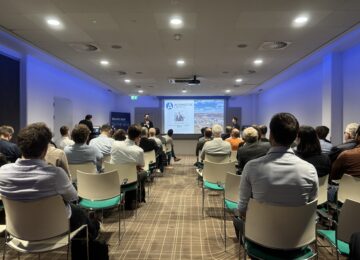Long-duration Energy Storage (LDES): the unknown key to large-scale flexibility?
While lithium-ion batteries are popping up in more and more places, many other forms of energy storage remain structurally underexposed. Techniques that are well suited for storing large amounts of energy for many hours, days or even weeks, remain in many cases still stuck at the stage of plans, pilots or small-scale production. At the same time, government and grid operators are increasingly signaling that the energy system is becoming unaffordable without large-scale flexibility, and are looking for ways to unlock it in time. With a knowledge session on March 13, Energy Storage NL took the initiative to spark discussion among key stakeholders.
Insights from modeling studies
The session began with an analysis of modeling studies. CE Delft presented a study on the energy mix and market dynamics within the CO2-free electricity system envisioned in the National Energy System Plan. This analysis showed that LDES - defined as 24-hour storage - can have an important function, but also faces competition from short-cycle storage such as batteries. Further development of the market depends on factors such as demand-side management, hydrogen plants and technological advances within LDES.
DNV followed this up with an internal analysis on the competition between LDES and batteries. They concluded that the rise of batteries will affect some of LDES' potential revenues. An LDES technology with an efficiency of 50% would require a cost of up to €20/kWh to achieve a market share of 5%.
Funding of LDES
The second part of the session focused on the financing and revenue model of LDES. Eneco indicated a need for 2-2.5 GW of flexibility in Northwest Europe for balancing energy portfolios. LDES could be particularly interesting for improving the business case of offshore wind farms. At the same time, cost reductions in batteries remain a challenge, as they could take over part of the market from LDES.
Invest-NL shared insights on the financing of LDES and indicated that the "window of opportunity" is increasingly moving toward multi-day storage, partly due to delays in hydrogen storage projects. Invest-NL sees a capacity market as a possible solution to get LDES off the ground faster and invited the industry to discuss this further.
International developments and conclusions
A video from the LDES Council offered an international perspective on policy around LDES. Globally, governments are taking steps to encourage the development of long-term storage. In Ireland, for example, the grid operator has indicated it needs 2.8 GW of LDES by 2030, while the UK is introducing a cap-and-floor mechanism to stabilize LDES operators' revenues.
The knowledge session concluded with discussion tables that discussed what steps the government, grid operators and market players can take to accelerate the development of LDES in the Netherlands. The main conclusion was that there is a strong need for coordination and visibility of ongoing initiatives, as well as a clear long-term vision of the flexibility needed. ESNL continues to bring this topic to the attention of the government and grid operators to provide direction for a future-proof energy system.





